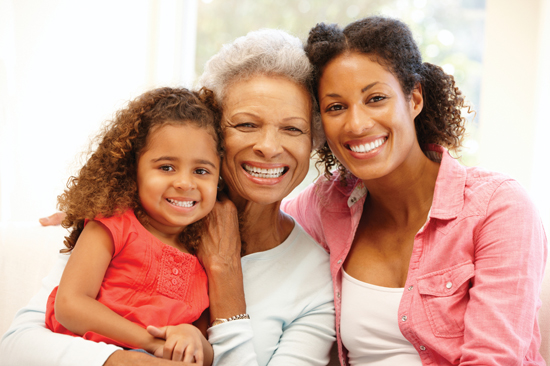
The BRCA “breast cancer gene” mutation is hereditary and can increase a woman’s lifetime risk of developing breast cancer to 60%.
What Are The “Breast Cancer Genes?”
The two “breast cancer genes” are known as BRCA1A gene which, when damaged or mutated, can put a person at a greater risk of developing breast and/or ovarian cancer. and BRCA2A gene which, when damaged or mutated, may put a woman at a greater risk of developing breast and/or ovarian cancer. This gene is also thought to raise the risk for breast cancer in men.. These genes are usually pronounced braca, and their names are simply abbreviations of the longer terms given by the researchers who discovered them: BReast CAncer susceptibilityThe state or fact of being likely or liable to be influenced or harmed by a particular thing. geneA sequence in the DNA which can be passed down from parent to child. Genes helps determine physical and functional traits for the body. 1 and BReast CAncer susceptibility gene 2. BRCA1 and BRCA2 are genes that everyone has, but some people have mutations on these genes that can greatly increase the risk of breast and ovarian cancer. These genes are known as “tumorA mass of cells that can be benign or malignant. suppressors,” and when they function normally, they help maintain cell growth at the appropriate rate. When harmful mutations are present, cells have the potential for unchecked growth, the simplest definition of breast cancer.BRCA1 & BRCA2 Heredity
These mutations of BRCA1 and BRCA2 are hereditary, or passed along by a parent. Since we inherit two of each gene (one from each parent), that means we have two copies of BRCA1 and BRCA2. If a harmful mutation of one of these genes is inherited from a parent, every cell in the body will possess one mutated copy of the gene and one normal copy. As long as the other copy continues to function normally, breast cancer will not develop, which is why not every woman with a harmful mutation gets cancer. Her risk factor is much higher, but it’s certainly not a guarantee of breast cancer. However, if the other copy of the gene is altered or mutated later in her life, cancer can occur. The part of the body where that second mutation occurs, such as the breast or the ovary, determines where the cancer will develop. This is a simplified explanation, and we still don’t know what exactly causes those secondary mutations, but it may be due to other biological or environmental risk factors.BRCA1, BRCA2, and Risk Factors
Recent breast cancer statistics say that 1 in 8 women from the general population will be diagnosed with breast cancer in her lifetime. But approximately 60 percent of women who have inherited these harmful mutations will develop breast cancer. That’s 3-in-5. Not all breast cancer is due to these geneticInherited characteristics. mutations—scientists’ best estimates suggest that only 5 to 10 percent of breast cancers are due to the mutations of BRCA1 and BRCA2. And again, not all women who have the mutation will develop breast cancer. But, more than half of them will, and many at an earlier age than the average diagnosis.Differences Between BRCA1 and BRCA2
Although mutations on both genes are related to increased risk of breast cancer, they are two entirely separate genes. BRCA1, identified in 1990, is on chromosome 17, while BRCA2, identified in 1994, is on chromosome 13. Both mutations increase the risk of ovarian cancer, as well as pancreatic cancer. A BRCA1 mutation can also increase the risk of cervical, uterine, and colon cancer, while BRCA2 can increase the likelihood of stomach, gallbladder, and bile duct cancer, plus melanoma. BRCA1 mutations are more often associated with the development of triple-negative breast cancer, which is more difficult to treat than most types of breast cancer.Who’s At Risk for BRCA1 & BRCA2 Mutations?
Since the harmful mutations are inherited from either the mother or the father, family history on either side is the best indication of whether the mutation is present. Doctors will look for specific “warning signs”, including:- Two first-degree relatives (mom, daughter, sister) with breast cancer, or if one was diagnosed at 50 or younger
- Three or more first- or second-degree relatives (including grandmother or aunt), regardless of age
- Any first-degree relative with cancer diagnosed in both breasts
- Any first or second degree relative diagnosed with both breast and ovarian cancer
- Breast cancer in a male relative